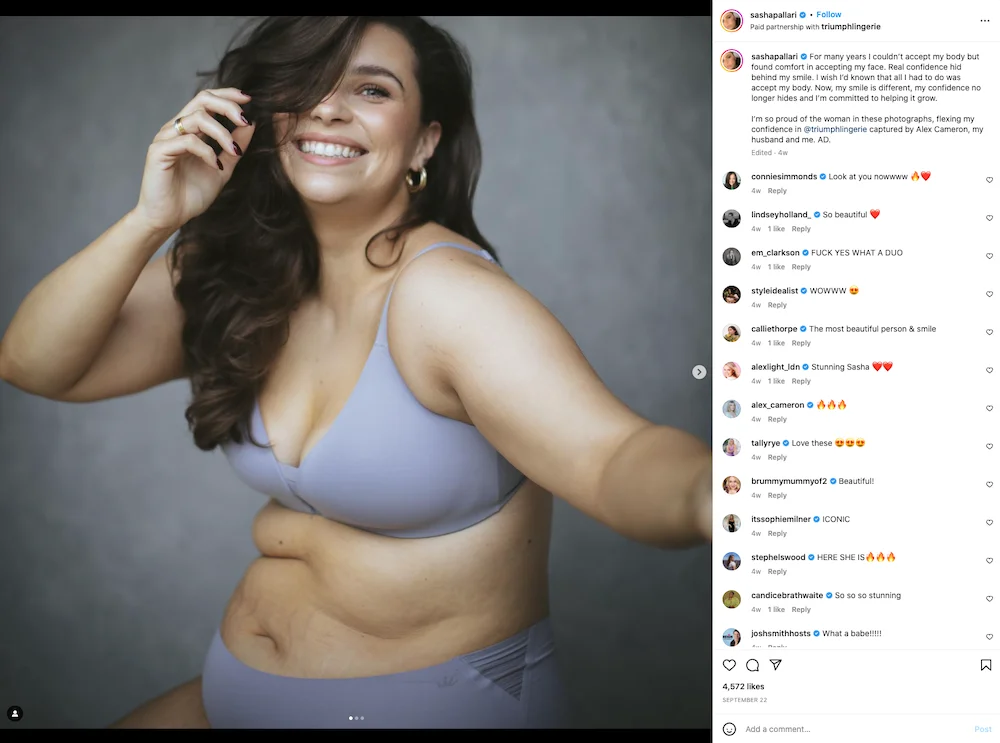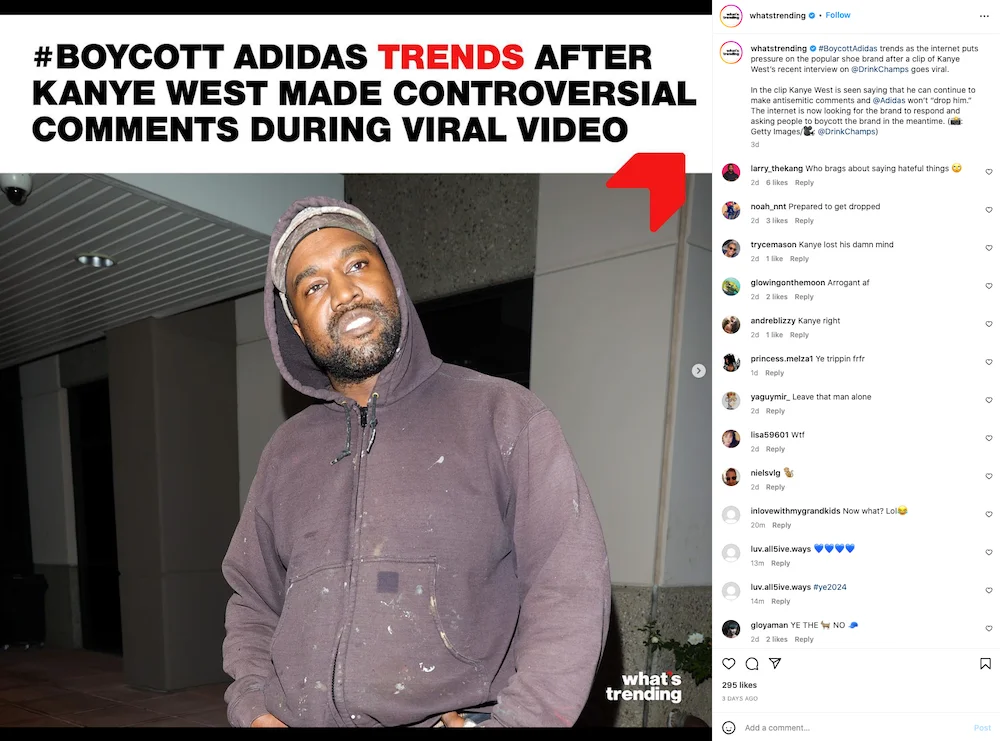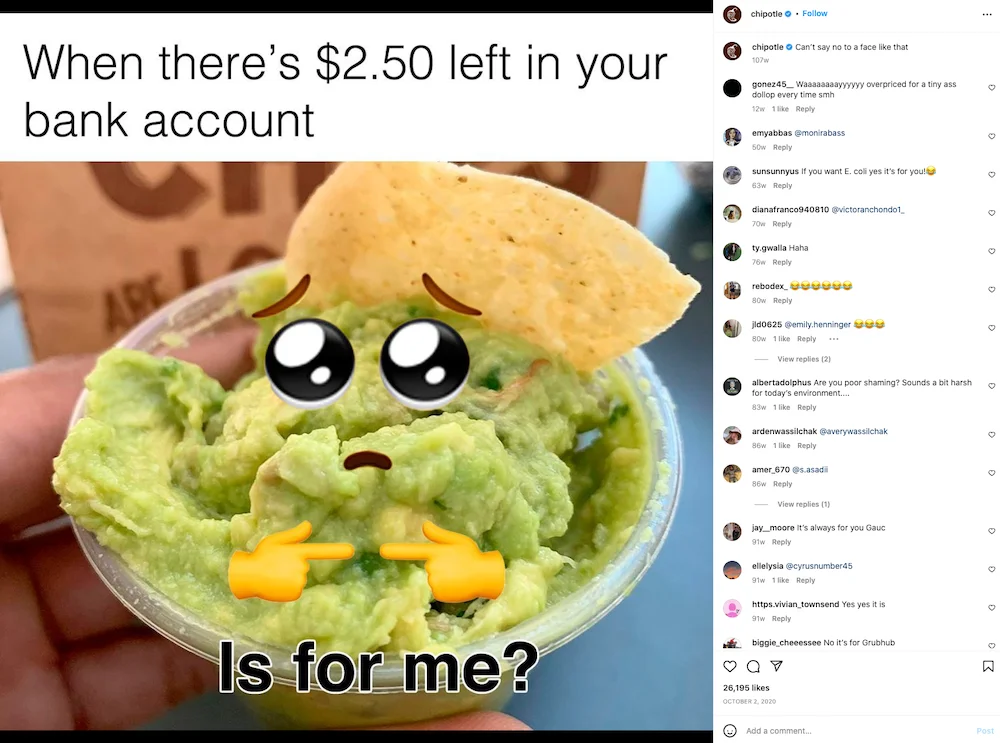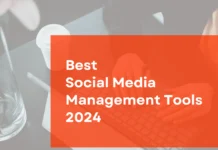
At 2.4 billion monthly active users, Instagram is still one of the most active social media platforms, ahead of TikTok even, which has a little over 1 billion monthly active users. 23.1% of people over 13 from all over the world are using Instagram.
With such a huge user base, it’s only normal that Instagram trends come and go as the platform is continuously learning how to cater to its users, and especially to Gen-Z-ers, who are basically dictating social media trends. Still, there are some long-lasting Instagram trends that have bloomed over the past few years, and that will continue to grow in 2024 and possibly over the following years.
Trends like authentic content and activism are more than just some fleeting Instagram preferences and reflect the direction the world is moving in after a pandemic, wars, and at least a handful of social justice issues that have surfaced and resurfaced in recent years.
It is more these types of Instagram trends that we’ll be talking about in this article, and not just themes or topics like in our article on the most popular TikTok trends of 2023.
So without further ado, let’s check it out, what is the latest trend on Instagram?
The Need for Authentic Content
Involvement in Social Justice Movements
Microinfluencers Over Macroinfluencers
Shoppable Posts and Insta-Shopping
User-Generated Content
Fashion and Beauty Trends on Instagram for Gen Z in 2024
Preference For Bite-Sized Content
Music Integration on Instagram
Collaborative Posts
Link in Bio for Traffic
Interactive Live Sessions
Polls in Comments
Meaningful Connections
Brand Memes
Most Popular Instagram Trends of 2024
1. The Need for Authentic Content
The past few years have seen an increasing need for authentic content from both influencers and businesses. While aesthetically pleasing and appealing, there comes a time when perfectly curated feeds and pictures start to become boring and feel inauthentic. Humans crave real connection and relatability, and it’s hard to be relatable when everything on your page screams perfection or fakeness. That’s why more unfiltered photos and posts with a real story behind them have become increasingly popular on Instagram and will continue to be popular throughout 2024 and probably beyond. A good example of this is Sasha Pallari, a make-up artist who created #FILTERDROP and who promotes body positivity and self-acceptance on her feed.

The trend towards more authentic content has seen a surge not just among influencers but brands as well. In 2024, brand authenticity will be an absolute requirement. People want to know there are real humans behind the brand that they can connect to, they want their favorite brands to share the same values as them, and, most importantly, they want brands to promote transparency. When consumers feel connected and trust a brand, they are much more likely to buy from that brand. In fact, research conducted by Sprout Social shows that 76% of consumers will choose that brand over a competitor, and 57% will increase their spending, which brings us to the next Instagram trend:
2. Involvement in Social Justice Movements
As mentioned above, people need to feel like they’re sharing the same values with whomever they’re following on social media. This has pushed more and more brands to get involved and speak up on matters of social justice, environmental concerns, and politics. However, it’s important for people to see that this activism is truthful and not just a facade to sell more products under a “we care” umbrella. As a brand, you need to commit to a cause you really care about and show proof of support either through an external website or through Instagram’s own feature that lets users raise money for good causes and create fundraisers. In fact, the introduction of this feature has led to all kinds of cause-related marketing, which has been used both to raise money or signatures for a good cause or as a means to promote the brand’s own products. Either way, businesses have a lot to gain from this because fighting for a cause will bring attention to the brand itself, and consumers will be more likely to purchase their products.
However, fundraising and activism are sometimes not enough, and as a brand, you need to consider that even silence is a form of activism or, more precisely, a lack thereof, and consumers are listening. Take the example of Adidas and one of its celebrity business partners, Kanye West. Kanye West made some anti-semitic comments in an interview and then bragged that Adidas can’t drop him even if he says these things. Well, Adidas did eventually drop him and said they would “end production of Yeezy branded products and stop all payments to Ye [Kanye West] and his companies”, but they sure took their time and did it only after the Internet put pressure and started trending #BoycottAdidas.

So moral of the story is: don’t wait until consumers start boycotting and canceling you, take action as soon as one of your brand ambassadors does something that doesn’t align with your brand values, and especially your customers’ values.
3. Microinfluencers Over Macroinfluencers
This Instagram trend stems from a need for trust and connection as well. While celebrity influencers are nice to follow and admire, it’s almost impossible to engage with them, so Instagram users have been moving more towards smaller influencers that are much easier to connect with and relate to. As people start craving authentic content more and more, microinfleuncers do a much better job at satisfying this need, as their content is more real and better mirrors a regular person’s own life experiences.
This is valuable information for businesses as well. While 4 out of 5 young people believe that social media celebrities have more influence on culture than traditional celebrities like actors, singers, sportsmen, etc., according to Instagram’s Trend Report for 2022, smaller influencers can also be great to partner with. Their audience is smaller, but they have a higher engagement rate, and they are much cheaper than celebrity influencers.
If you find the right microinfluencers for your target audience, you can have a great return on investment, as their followers will be much more likely to trust them and their product recommendations. In the short-term, you might end up with a similar amount of products purchased as when working with a macroinfluencer, but with more faithful long-term customers, which will bring you more revenue in the end.
4. Shoppable Posts and Insta-Shopping
The trend of shoppable posts on Instagram, which aligns with the broader Insta-Shopping movement, has significantly evolved in 2024. This integration marks a shift in the way young consumers engage with e-commerce, moving away from traditional online retailers and towards shopping through social media.
Instagram’s 2022 Trend Report highlighted this shift, noting that more than half of young people are gravitating away from big-box retailers in favor of shopping through social media feeds and in-app features. Particularly among teens and young adults, 27% are expected to shop directly through their social media feeds, leveraging the platform’s integrated shopping features.
The concept of shoppable posts on Instagram allows users to shop directly from the content they are viewing. Brands can tag products in their posts, leading users to a product page within the app with just a tap. This seamless integration facilitates the shopping experience, blending social media engagement with online purchasing.

The popularity of this feature has been growing since its introduction in 2019. Initially, Instagram announced that over 130 million users engaged with shopping tags in posts each month. This number has likely increased, particularly as the pandemic accelerated the shift towards online shopping.
For brands, shoppable posts offer a streamlined way to convert followers into customers, capitalizing on the impulse buying behavior that social media shopping can encourage. For consumers, it presents a convenient and integrated shopping experience, allowing them to discover and purchase products without leaving the app.
In summary, the integration of shoppable posts within the Insta-Shopping trend reflects a significant change in consumer behavior and underscores Instagram’s role as a formidable player in the e-commerce sector. This trend is shaping a new landscape where social media platforms are not just for connection and content sharing but also for significant commercial transactions.
5. User-Generated Content
Speaking of shopping and micro/macro influencers, UGC has been very trendy in 2023 as well. Not that it’s something new, UGC has been around for quite a while.
But what is UGC? User-generated content is content that followers create naturally to promote a brand out of pure satisfaction with that brand’s products. With permission, the brand can then repost that photo or video to their profile and obtain two things: free endorsement for their product and free content.
Since this is great marketing for any brand because it builds credibility when people are genuinely excited about your products, there are now UGC creators who are paid to create content that looks like UGC but is actually paid promotion. I think this is quite sneaky, but sadly brands can easily get away with this because “influencers” can create accounts solely to promote just one product, and it looks like it’s the account of a regular person and not an influencer.
6. Fashion and Beauty Trends on Instagram for Gen Z in 2024
As we move into 2024, Instagram continues to be a pivotal platform for fashion and beauty trends, especially among Gen Z users. This demographic is known for its focus on individuality and self-expression, which is reflected in the specific trends gaining traction. Here are some key fashion and beauty trends on Instagram for Gen Z in 2024:
- Personalized Fashion Statements:
- Individuality in Clothing: Gen Z is leaning towards more personalized fashion choices, moving away from mainstream trends to create their unique styles.
- Mix-and-Match Aesthetics: There’s an increasing inclination towards mixing different fashion genres, patterns, and textures to create distinctive looks.
- Creative Beauty Choices:
- Innovative Makeup and Hair: Expect to see bold and creative makeup looks and hairstyles, as Gen Z embraces the freedom to experiment with their appearance.
- Skincare Focus: A growing interest in skincare, with a preference for products that are both effective and sustainable, is evident among this generation.
- Digital Fashion Integration:
- With the rise of AR and VR technologies, digital fashion – clothing and accessories designed for digital platforms and virtual realities – is becoming increasingly popular.
- Nostalgic Revivals:
- Revivals of fashion and beauty trends from past decades, reinterpreted with a modern twist, are becoming popular, fueled by the nostalgia trend.
- Health and Wellness-Inspired Beauty:
- Beauty trends are increasingly inspired by holistic health and wellness, with a focus on products that are not only aesthetically pleasing but also beneficial for the skin and body.
- Sustainability and Ethical Fashion:
- Gen Z’s awareness of environmental and ethical issues is influencing their fashion choices. There’s a growing preference for sustainable, ethically sourced, and second-hand clothing.

7. Preference For Bite-Sized Content
Studies show that since the mobile revolution in 2000, the average attention span has dropped from 12 to 8 seconds in a matter of 15 years. That’s less than the attention span of a goldfish.

With platforms like TikTok and Twitter training us to prefer more stimulating bite-sized content, it’s no wonder that this trend has transferred to other social media as well, and Instagram is no exception. Instagram has its options for longer-form content, but there is a clear preference for short posts, 15-second stories, and Reels, with video content having twice the engagement of regular photo posts.
8. Music Integration on Instagram
2023 has seen the rise of Music Integration as a prominent trend on Instagram. This feature enables users to add music to their posts (which means photos as well), stories, and Reels, enhancing the overall impact and appeal of their content. The addition of music not only enriches the user experience but also amplifies engagement and reach. For brands and influencers, this trend offers a new dimension of creativity, allowing them to produce more dynamic and emotionally resonant content. The strategic use of music in Instagram content can significantly boost its appeal, making it an essential tool for those looking to enhance their presence on the platform. This trend underscores the platform’s evolution towards more immersive and multimedia-rich content experiences.

9. Collaborative Posts
As Instagram continues to evolve, collaborative posts have become increasingly popular in 2023. This trend capitalizes on the power of partnership, bringing together different Instagram users to create shared content. Collaborations range from influencers working with brands to individual users joining forces for creative projects.
The appeal of collaborative posts lies in their ability to expand reach and engagement by tapping into the combined audiences of the collaborators. They also add a layer of authenticity and relatability, key factors in the current social media landscape where users crave genuine connections and diverse perspectives.
For brands and influencers, these collaborations are mutually beneficial. Brands gain access to niche markets and dedicated followers through influencers, while influencers enhance their credibility and exposure by partnering with established brands. The success of a collaborative post hinges on choosing the right partners whose values and audience align, and on engaging in effective storytelling to captivate the audience.
In 2024, collaborative posts on Instagram are not just about promoting products or services; they are about creating engaging, diverse, and authentic content that resonates with a wider audience.
10. Link in Bio for Traffic
The “Link in Bio” trend on Instagram has become increasingly influential in 2023. This simple yet powerful feature allows users, especially influencers and brands, to direct their followers to external websites, online stores, blogs, or any other digital destination. The link in the bio has turned Instagram profiles into gateways, leading followers to more in-depth content, products, or services outside the Instagram platform.
This trend is particularly important for those looking to convert their Instagram presence into tangible results like increased website traffic, higher product sales, or more engaged blog readership. By placing a clickable link in their bio, users provide a convenient way for their followers to access additional content or resources.
For brands, this is an opportunity to bridge the gap between social media engagement and their business goals. A well-utilized link in the bio can effectively funnel Instagram traffic to revenue-generating platforms, such as an e-commerce site. Influencers use this feature to direct followers to their latest content, collaborations, or sponsored products, thereby maximizing the impact of their partnerships and promotions.
In essence, the “Link in Bio” trend underscores the evolving nature of Instagram from a purely social platform to a comprehensive tool for business and content promotion. It highlights the strategic importance of integrating social media activities with broader digital marketing objectives.

11. Interactive Live Sessions
Interactive live sessions have emerged as a key trend on Instagram in 2023, reshaping how users engage with their audience. This feature enables real-time interaction, offering a platform for live discussions, demonstrations, Q&As, and more. The immediacy and authenticity of live sessions create a more personal and engaging experience, fostering a stronger sense of community among followers.
For influencers and brands, interactive live sessions are an invaluable tool for deepening audience engagement. They provide a unique opportunity to showcase personality, expertise, and behind-the-scenes glimpses, all of which contribute to a more relatable and trustworthy presence. These sessions are also ideal for product launches, tutorials, or addressing topical issues, allowing for immediate feedback and interaction.
The popularity of live sessions is partly due to the way they break down the barrier between creators and their audience. The ability to respond to comments, answer questions in real time, and even feature guests or followers within the live stream adds a dynamic and inclusive dimension to the content.
This trend not only enhances the content’s impact but also significantly boosts its reach and visibility. As Instagram continues to prioritize live content in users’ feeds, interactive live sessions offer a powerful way to stay visible and relevant on the platform.
12. Polls in Comments
In 2023, the use of polls in Instagram comments has become a specific and interactive trend, engaging users in a unique way. This feature allows content creators to post a question in their caption and invite followers to vote or express their opinions in the comments section. Unlike the more general polls in stories, these comment-based polls encourage longer engagement times and deeper interactions within the post’s comments.
The trend is particularly popular among brands and influencers for several reasons. Firstly, it serves as an effective tool for audience research, providing insights into followers’ preferences and opinions. For instance, a beauty brand might post two different makeup looks and ask followers to comment on which they prefer. This not only drives engagement but also offers valuable feedback directly from the target audience.
Secondly, polls in comments create a lively and interactive environment. This interaction fosters a sense of community among followers, as they not only engage with the post but also with each other’s comments. It’s a way of turning a post into a conversation hub, increasing the post’s visibility and stickiness.
Moreover, this trend taps into the human desire for expression and involvement. People enjoy sharing their opinions and feeling heard, and comment-based polls perfectly cater to this need. By involving followers in decisions or discussions, brands and influencers can strengthen their relationship with their audience, making them feel more connected and valued.
In summary, polls in comments on Instagram in 2023 are more than just a tool for engagement; they represent a strategic approach to community building, market research, and fostering meaningful interactions on the platform.

13. Meaningful Connections
In 2024, Gen Z’s approach to Instagram reflects a significant shift towards creating meaningful connections. This generation, known for its digital savviness, is using the platform not just for entertainment or self-expression but also for fostering deeper relationships and community building.
Gen Z users are increasingly prioritizing authentic interactions over mere content consumption. They are engaging in ways that facilitate real conversations and connections, such as through direct messaging, commenting on posts in a more personal and meaningful way, and sharing content that resonates with their values and interests.
This trend also includes a focus on using Instagram to stay connected with friends and family, emphasizing the platform’s role in maintaining personal relationships. Gen Z’s approach to Instagram is reflective of their desire for authenticity and genuine engagement in the digital space, marking a shift from the platform being purely a tool for broadcasting to one that fosters real community and connection.
14. Brand Memes
Memes are the king of the Internet, so it’s only natural that the human tendency for memes has somewhat taken over Instagram as well. According to Instagram’s 2022 Trend Report, “As times continue to become more uncertain, young people are leaning on mediums they can grasp and control. Memes provide a modest amount of certainty & control.”
And since memes have become so popular on Instagram as well, brands have caught on and have tried to put their spin on it as well. But it takes a special skill to create good memes, and not all brands have got that down. Posting general memes on your brand account is OK, but creating memes that actually make sense for your brand and users is a game-changer. You need to find something funny that somehow relates to your branding or products, or create a new meme that your customers can relate to. One brand that does this well is Chipotle. They frequently post creative memes that are both adorable and relatable, like this one:

These were the Instagram trends we found most interesting in 2024. We’ll keep updating this article and adding more as things change, so keep an eye on our social accounts, and don’t forget to share this with your Instagram friends.
See also: What hashtags are trending on Instagram?











